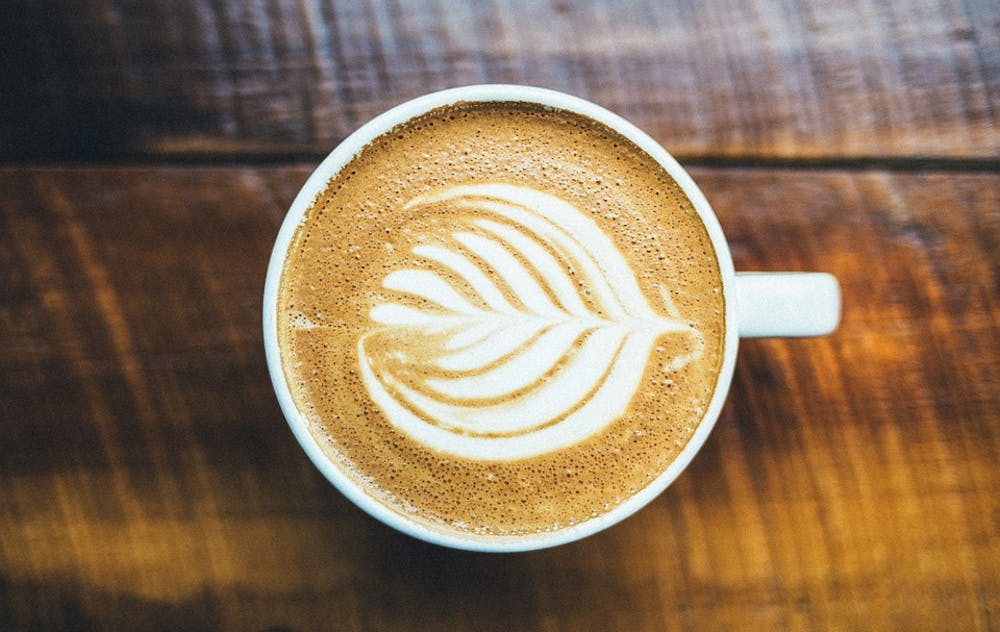By: Denali Selent
If you’re like over 50 percent of Americans 18 and older, a cup of coffee is part of your daily ritual. Whether you turn to coffee for a delicious morning pick-me-up, or use it to power through late night study sessions, you may find yourself wondering about the little ways you can enjoy a more eco-conscious espresso. If so, you’ve come to the right place!
Unfortunately, the high global demand for coffee products has led to the deforestation of millions of acres of land to make way for coffee bean monocultures. On top of that, coffee farmers often endure very poor working conditions and meager salaries while large coffee companies rein in all the profit. Fortunately, there are some simple swaps that can make your daily coffee a little gentler to our planet!
Step One: Choosing your Grounds
- Be on the lookout for certifications: While coffee companies don’t guarantee perfectly sustainable and ethical production methods, they may print certification labels on the package that you can check for prior to purchasing. Certifications are either government or third-party stamps of approval that say a product has met a certain set of standards. Two common certifications on coffee that indicate a higher degree of environmental sustainability include: The Rainforest Alliance Certification and the Smithsonian Institute Bird Friendly Coffee Certification. Similarly, Fairtrade Certified indicates better conditions for farmers and their employees.
- Choose single-origin coffee: The term “single-origin” indicates that the coffee is sourced from the same regional location (either the same farm or the same country) and is often an indicator of a more sustainable product.
- Choose recyclable- or better yet, compostable -packaging: Additionally, if you live near a bulk food shop you can purchase your beans or grounds and package them in your own container.
Step Two: Brewing
- French-press, pour over, or drip coffee: These methods get the gold star in eco-friendly brewing because they skip the electric coffee machine! While they do still require boiling water, they save energy in the long run. In regards to prepping your hot water, insideenergy.com ranks the most energy efficient boiling methods as using a hot plate, using an electric kettle, using an electric stovetop, and finally using a microwave.
- Using a Keurig or electric coffee maker: While single use k-cups may be convenient, they send a lot of unnecessary waste to the landfill (not to mention, they are far more expensive per cup). Purchasing a reusable k-cup and some compostable filters can keep your brewing green for years to come. Keurigs can also be vampire appliances, meaning they use electricity even when powered off, so don’t forget to unplug it when not in use.
- Try out cold brew: If you like your coffee iced, try your hand at brewing some cold brew! This method uses cold water rather than hot water and is described as being “creamy, smooth, and less acidic” when compared to it’s hot coffee counterpart.
Step Three: Picking a Cup
- Opt for your favorite ceramic mug or reusable thermos.
- Stay away from single use cups made of styrofoam, plastic, or paper.
Enjoy what you're reading?
Signup for our newsletter
Step Four: Additions
- If you love your coffee sweet: Sugarcane grown today can have drastic negative impacts on the environment. Once again, while it’s not a perfect solution, search for Fairtrade certified and USDA organic sugar on your grocery store shelves. The website EcoWatch also suggests five sugar alternatives that can be gentler on mama earth: Stevia, honey, organic whole-cane sugar, organic coconut sugar, and organic brown rice syrup.
- If you love your coffee creamy: Long gone are the days of sparse dairy alternatives. Many brands now offer a variety of plant-based milks, creamers, and even whipped creams. This can take your cup of coffee a long way toward sustainability, as dairy production contributes significantly to agricultural land use, water use and greenhouse gas emissions. For example, when compared with dairy milk, one glass of oat milk accounts for about one-third of the greenhouse gas emissions, one-eighth of the land use, and one-twenty fifth of the water use.
Step Five: Keep those grounds!
- Don’t forget that coffee grounds make great compost.
- If you’re feeling extra creative, this article outlines 17 fun ways you can repurpose your coffee grounds.
How do you like your coffee? I hope you’ll try out a few of these tips to make your morning cup of joe a bit more green!
Photos courtesy of Pixabay.




